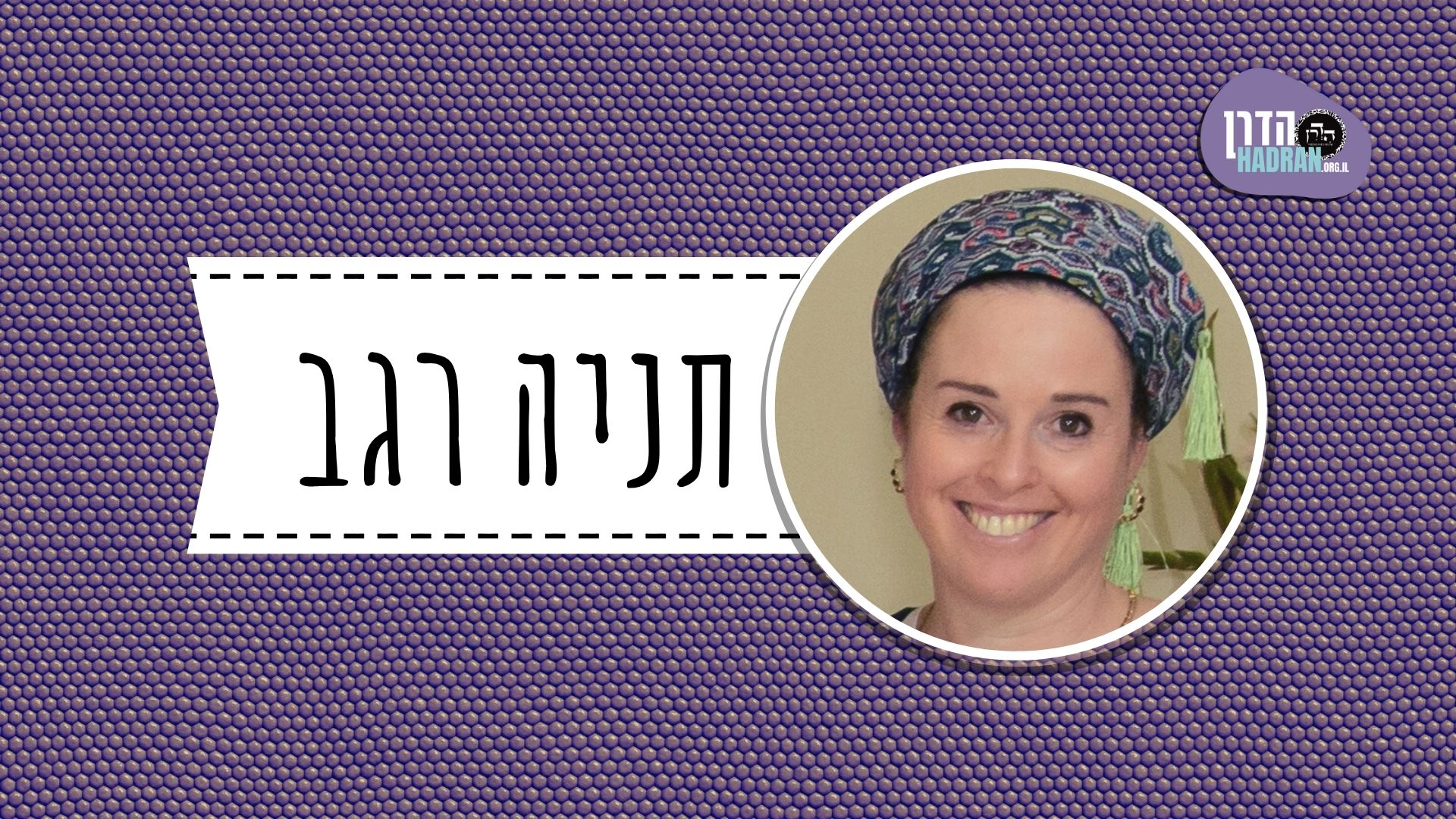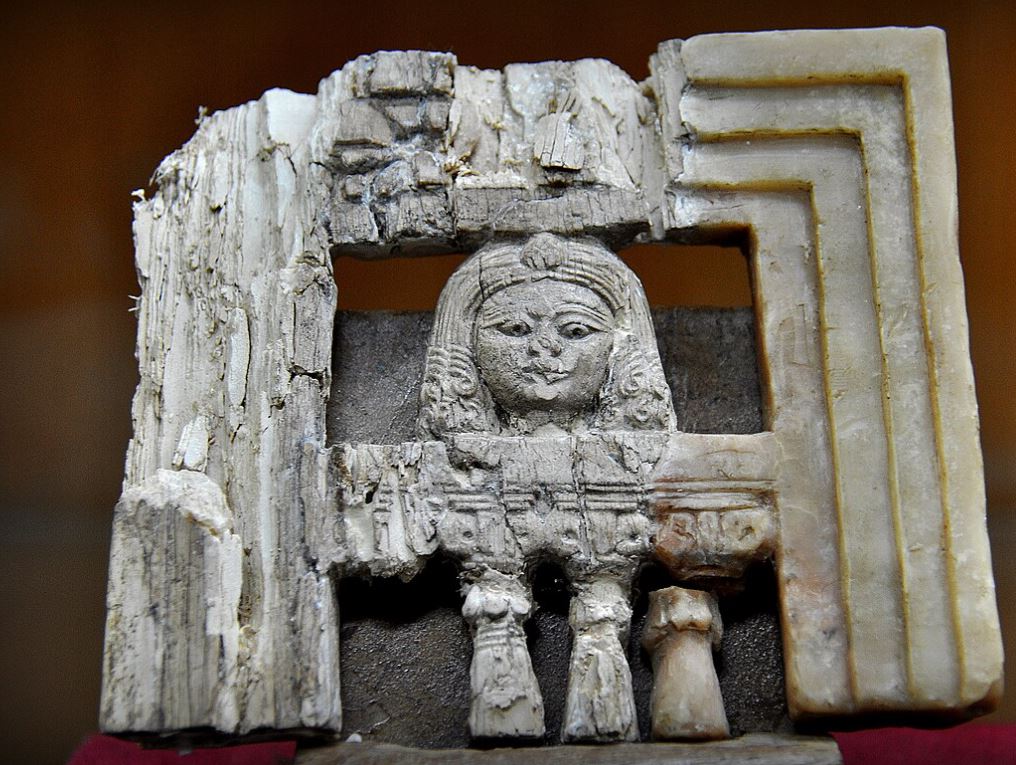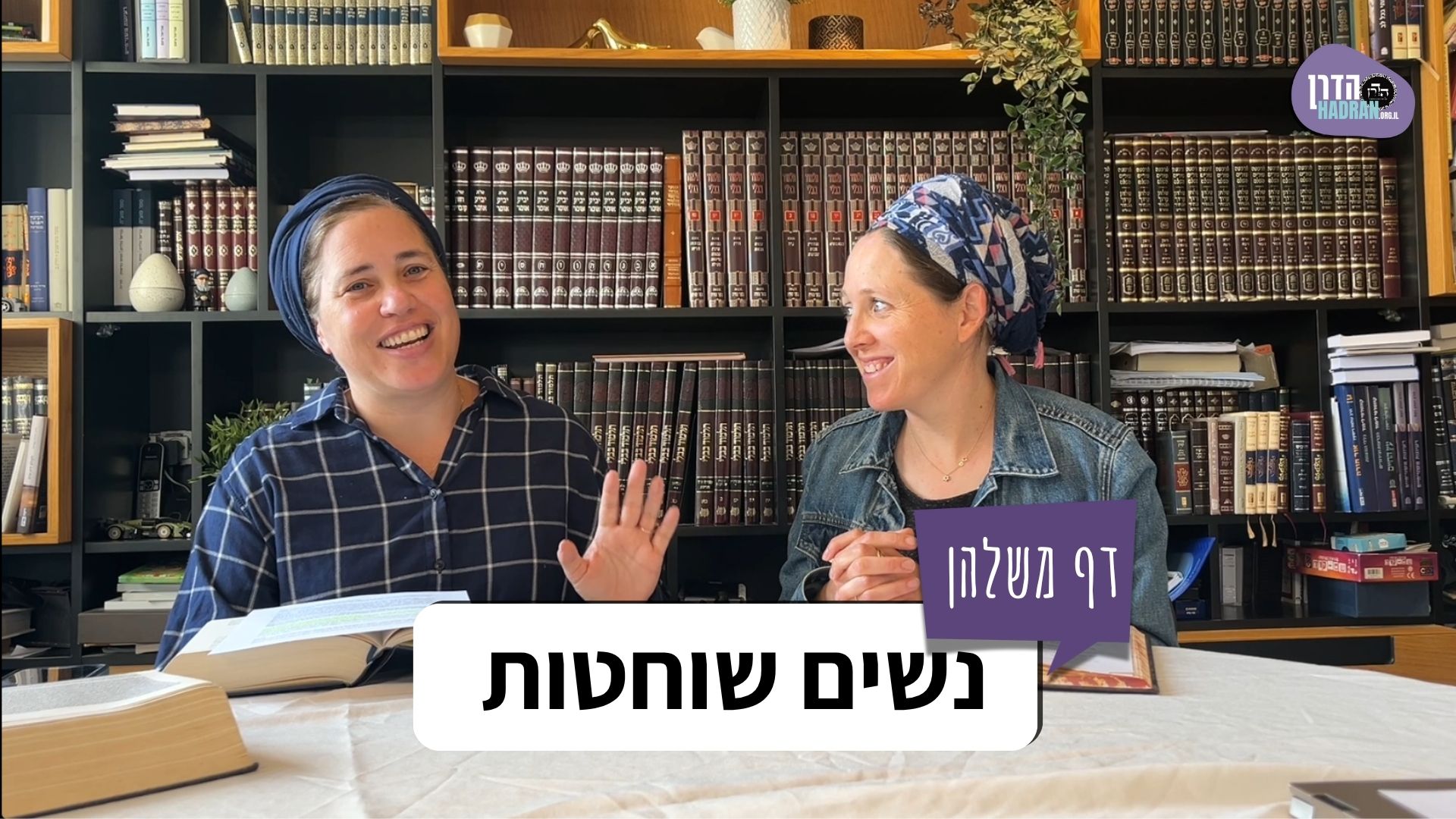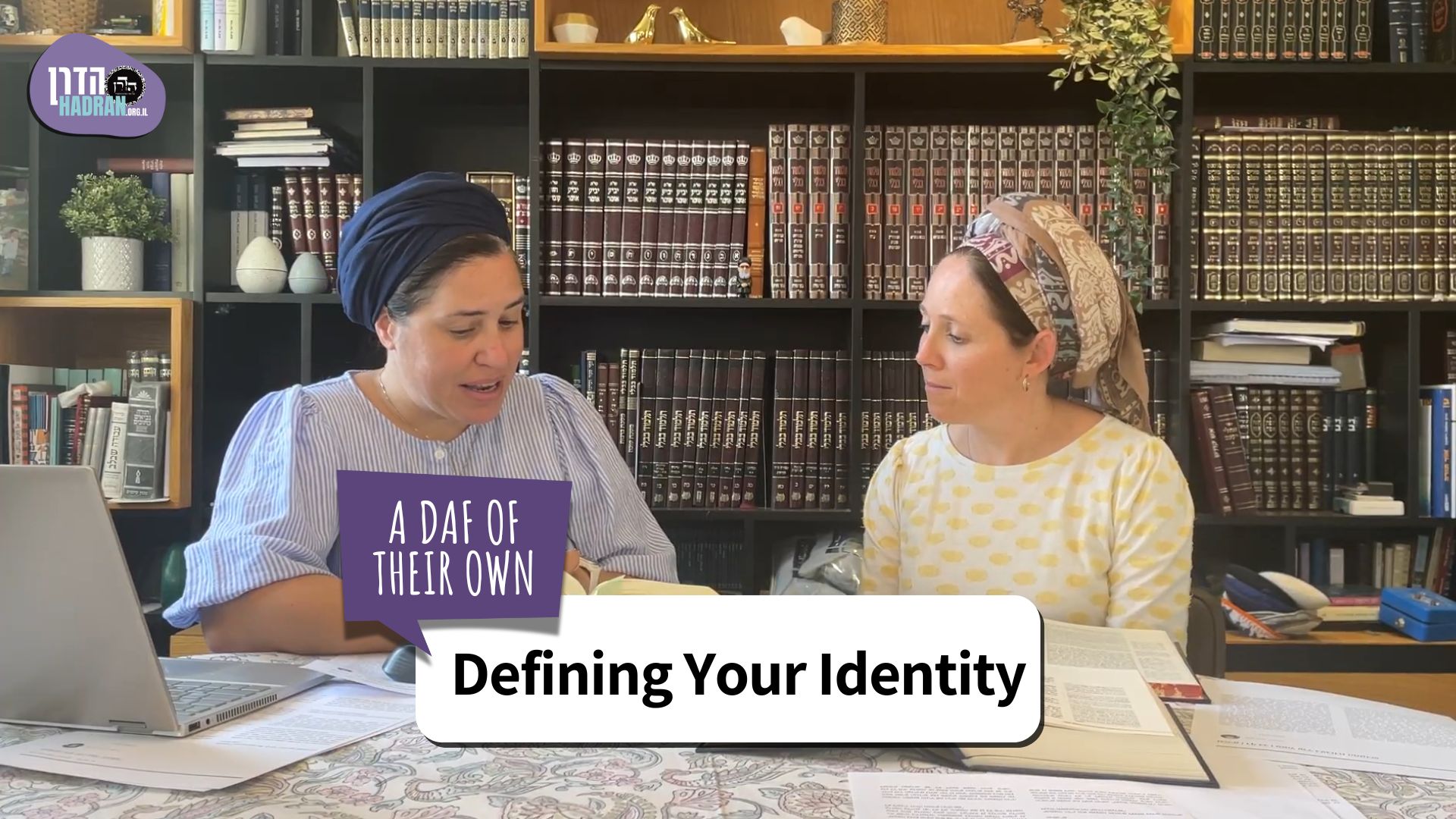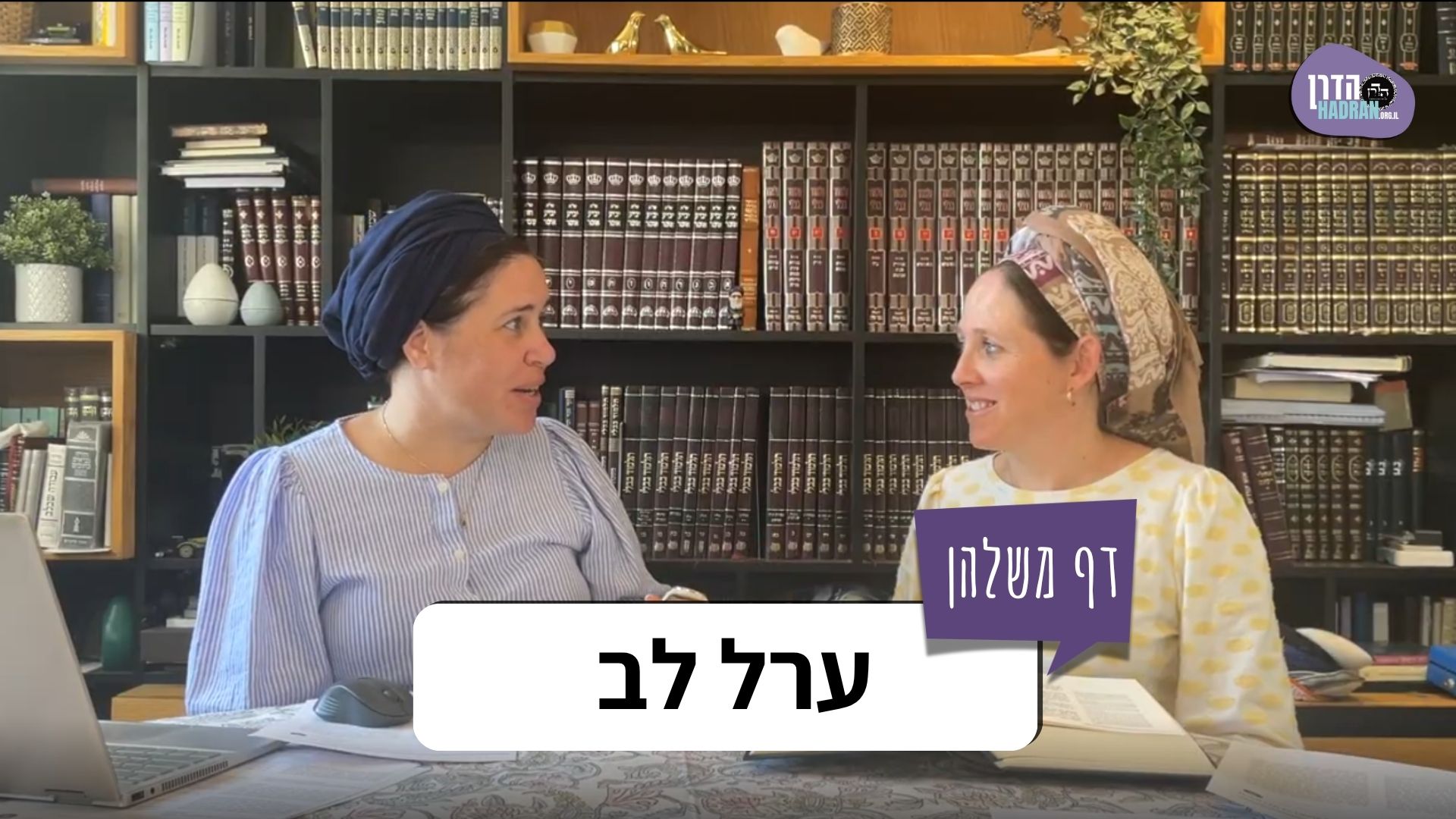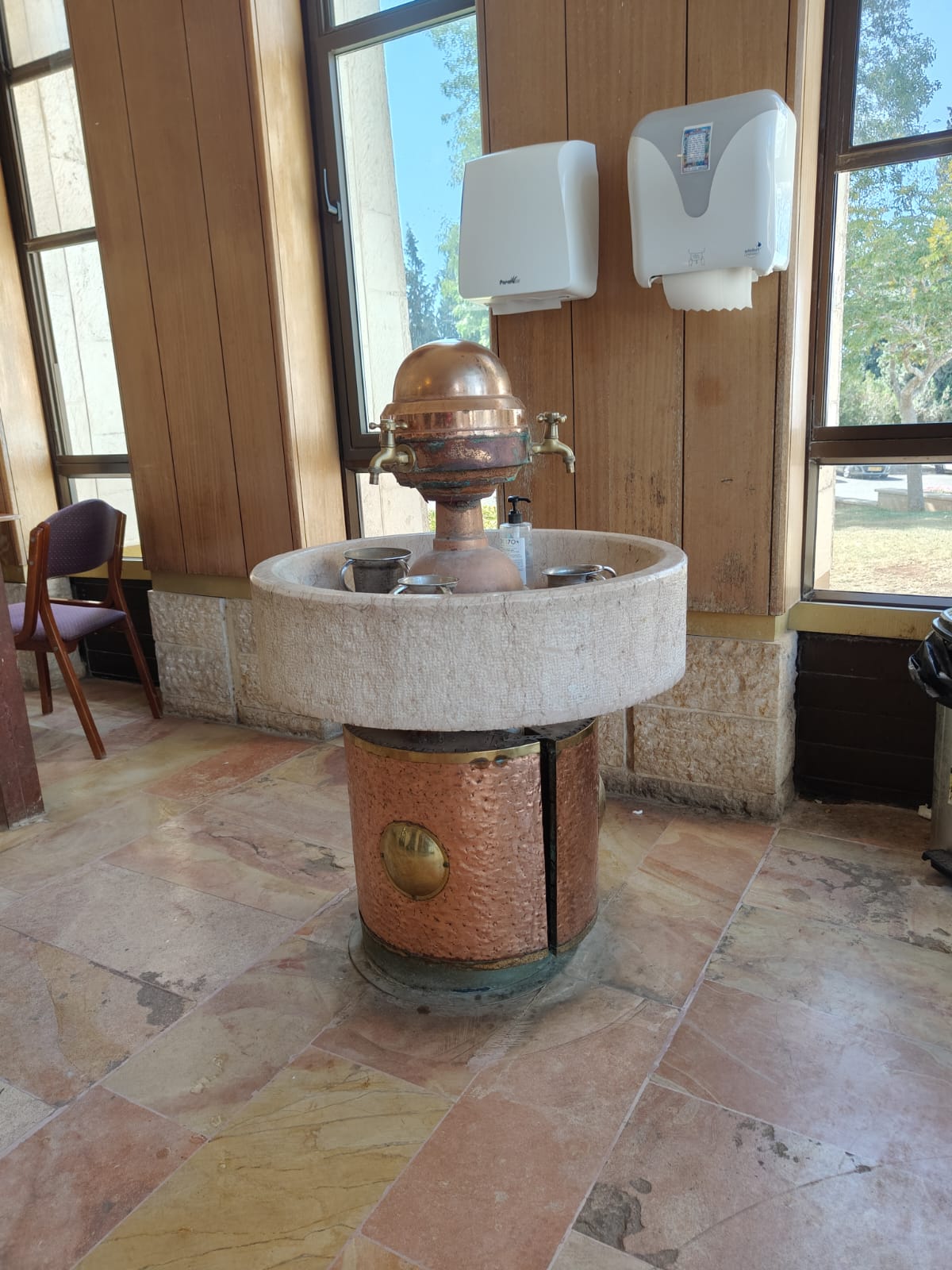A thorn that is found in various parts of the animal – can one assume it came through a duct and didn’t pierce anything on its way or not? Are there cases when one can assume that a whole found in the animal was created after the shechita and therefore the animal would be kosher? Rabbi Yishmael and Rabbi Akiva debate 2 issues – are fats on the stomach permitted or forbidden and how were the kohanim themselves blessed (if they bless the peoople – what about themselves). Can fats inside the animal be an effective seal for a tear? Can one be lenient based on the principle – the Torah has compassion for the money of the people of Israel.
This month’s learning is sponsored by Beth Balkany in honor of their granddaughter, Devorah Chana Serach Eichel. “May she grow up to be a lifelong learner.”
Want to dedicate learning? Get started here:


This month’s learning is sponsored by Beth Balkany in honor of their granddaughter, Devorah Chana Serach Eichel. “May she grow up to be a lifelong learner.”
Delve Deeper
Broaden your understanding of the topics on this daf with classes and podcasts from top women Talmud scholars.
New to Talmud?
Check out our resources designed to help you navigate a page of Talmud – and study at the pace, level and style that fits you.
The Hadran Women’s Tapestry
Meet the diverse women learning Gemara at Hadran and hear their stories.
Chullin 49
בעובי בית הכוסות מצד אחד כשרה משני צדדין טרפה ולא אמרינן ליחזי אי קופא לבר אי קופא לגיו
embedded in the thickness of the wall of the reticulum, where the halakha is as follows: If the needle protrudes from one side, i.e., the inner side of the stomach wall, the animal is kosher, but if it protrudes from both sides, it is a tereifa; and if it protrudes only on the inside we do not say: See if the eye of the needle is facing outward or if the eye of the needle is facing inward? Rather, the animal is deemed kosher even if the eye is facing outward, and that is not considered evidence that the needle perforated through the gullet into the chest cavity and then perforated the thickness of the reticulum.
אמרי התם כיון דאיכא אוכלים ומשקים אימא אוכלים ומשקים דחקוה
The Sages say in response: There, in the case of the reticulum, since there are food and liquid present, one may say that the food and liquid pushed the eye of the needle through the stomach wall. Therefore, even if the eye points outward, one may still presume that the needle came from the inside, and the animal is kosher.
ההוא מחטא דאישתכח בסמפונא רבה דכבדא הונא מר בריה דרב אידי טריף רב אדא בר מניומי מכשר אתו שיילוה לרבינא אמר להו שקילו גלימא דטרופאי
The Gemara relates that there was a certain needle that was found in the large duct of a liver. Huna Mar, son of Rav Idi, deemed the animal a tereifa, while Rav Adda bar Minyumi deemed it kosher. They came and asked Ravina about the issue, and he said to them: Take the robe of those who deemed it a tereifa. They must pay restitution to the owner of the animal, who was wrongfully forced to discard his kosher meat.
ההיא קשיתא דאישתכח במרה אמר רב אשי כי הוינן בי רב כהנא אמר הא ודאי סימפונא נקט ואתאי אע”ג דלא קא נפקא מירבל הוא דרביל ליה וה”מ דדיקלא אבל דזיתא מיבזע בזע
The Gemara relates that there was a certain date pit that was found in a gallbladder. Rav Ashi said: When we were in the house of Rav Kahana as students, he would say with regard to such a case: This date pit certainly took the route of the duct connecting the liver and gallbladder and came through it to the gallbladder, as it is not sharp enough to have perforated the gallbladder from without. Even though it is large enough that it does not exit the gallbladder if one tries to squeeze it into the duct, one may still assume that the movements of the animal’s body gradually cause it to slip through the duct. The Gemara adds: And this statement applies only to the pit of a palm, i.e., of a date, but the pit of an olive is pointed. Therefore, one must be concerned that it has pierced the wall of the gallbladder, rendering the animal a tereifa.
א”ר יוחנן למה נקרא שמה ריאה שמאירה את העינים איבעיא להו לאכילה או ע”י סמנין
§ The Gemara returns to its discussion of the lung: Rabbi Yoḥanan says: Why is the lung called rei’a in Hebrew? Because it lights up [me’ira] the eyes of one who eats it. A dilemma was raised before the Sages: Is Rabbi Yoḥanan referring to a lung eaten as is, or is he referring to a lung eaten only through its treatment with certain substances?
ת”ש דאמר רב הונא בר יהודה אווזא בזוזא וריאה דידה בארבעה ואי ס”ד לאכילה לינקט בזוזא וליכול אלא ע”י סמנין
The Gemara suggests: Come and hear a resolution from that which Rav Huna bar Yehuda says: A goose may be purchased for a dinar, but its lung may be purchased for four dinars. And if it should enter your mind that Rabbi Yoḥanan is referring to eating the lung without treating it, one has no incentive to buy a lung separately for more money. Let him buy the whole goose for a dinar and eat the lung that comes included. Rather, it must be that the lung gains special properties only through treatment with certain substances, and this treatment is the reason for the higher price.
אינקבה ריאה היכא דממשמשא ידיה דטבחא תלינן או לא תלינן רב אדא בר נתן אמר תלינן מר זוטרא בריה דרב מרי אמר לא תלינן והלכתא תלינן
§ The Gemara asks: If the lung is perforated where the hand of the butcher handles it after slaughter, do we attribute the perforation to the butcher’s handling, or do we not attribute the perforation to the handling, in which case the animal is a tereifa? Rav Adda bar Natan says: We attribute it to the butcher’s handling, while Mar Zutra, son of Rav Mari, says: We do not attribute it to the handling. And the halakha is that we attribute it to the handling.
אמר רב שמואל בריה דרבי אבהו אבא מרישי כלי דרפרם הוה ואמר תלינן אמרוה קמיה להא דמר זוטרא בריה דרב מרי ולא קבלה
Rav Shmuel, son of Rabbi Abbahu, said: My father was one of the heads of the kalla lectures of Rafram, and he said: We attribute it to the handling. They said this halakha of Mar Zutra, son of Rav Mari, who held the opposite, before Rav Shmuel, and he did not accept it.
אמר רב משרשיא כוותיה דאבוה דאבא מסתברא דהא תלינן בזאב
Rav Mesharshiyya said: It stands to reason that the halakha is in accordance with the opinion of Grandfather, i.e., Rav Adda bar Natan, as we attribute perforations to a wolf. If slaughtered meat is recovered from a wolf and found to have a perforation that would have rendered the animal a tereifa, one may attribute the perforation to the wolf and presume that it did not exist beforehand.
מורנא פליגי בה רב יוסף בר דוסאי ורבנן חד אמר קודם שחיטה פריש וחד אמר לאחר שחיטה פריש והלכתא לאחר שחיטה פריש:
Furthermore, if a perforation was caused by a worm [murana], Rav Yosef bar Dosai and the Rabbis disagree. One says that the worm emerged from the lung and perforated it before the slaughter, and the animal is a tereifa, and one says that it emerged after the slaughter, and the animal is kosher. And the halakha is that one presumes that it emerged after the slaughter.
ר”ש אומר עד שתינקב: אמר רבה בר תחליפא א”ר ירמיה בר אבא עד שתינקב לסמפון גדול
§ The mishna states: Rabbi Shimon says: An animal with a perforated lung is not a tereifa until it is perforated through to the bronchi. With regard to this, Rabba bar Taḥlifa says that Rav Yirmeya bar Abba says: Rabbi Shimon meant specifically that it is not a tereifa unless it is perforated through to the large bronchus, from which the smaller bronchi branch out.
יתיב רב אחא בר אבא קמיה דרב הונא ויתיב וקאמר אמר רבי מלוך א”ר יהושע בן לוי הלכה כר”ש א”ל מלוך ערבאה קאמרת אין הלכה כר”ש קאמר
The Gemara relates that Rav Aḥa bar Abba sat before Rav Huna, and he was sitting and saying: Rabbi Malokh says that Rabbi Yehoshua ben Levi says: The halakha is in accordance with the opinion of Rabbi Shimon. Rav Huna said to him: Are you saying this in the name of Malokh the Arab? He says that the halakha is not in accordance with Rabbi Shimon.
כי סליק רבי זירא אשכחיה לרב ביבי דיתיב וקאמר א”ר מלוך א”ר יהושע בן לוי הלכה כר”ש א”ל חיי דמר דאנא ורבי חייא בר אבא ורב אסי איקלעינן לאתריה דרבי מלוך ואמרי ליה אי אמר מר הלכה כרבי שמעון ואמר לן אין הלכה כר”ש אמרי ואת מה בידך א”ל הכי א”ר יצחק בר אמי אריב”ל הלכה כר”ש
The Gemara continues: When Rabbi Zeira went up to Eretz Yisrael, he found Rav Beivai, who was sitting and saying: Rabbi Malokh says that Rabbi Yehoshua ben Levi says: The halakha is in accordance with the opinion of Rabbi Shimon. Rabbi Zeira said to him: On the Master’s life, I and Rabbi Ḥiyya bar Abba and Rav Asi visited the place of residence of Rabbi Malokh, and we said to him: Did the Master say that the halakha is in accordance with the opinion of Rabbi Shimon? And he said to us: I said that the halakha is not in accordance with the opinion of Rabbi Shimon. Rav Beivai asked Rabbi Zeira: And you, what more do you have in your possession on this matter? Rabbi Zeira said to him: This is what Rabbi Yitzḥak bar Ami says that Rabbi Yehoshua ben Levi says: The halakha is in accordance with the opinion of Rabbi Shimon.
ואין הלכה כרבי שמעון:
The Gemara rules: And the halakha is not in accordance with the opinion of Rabbi Shimon. Any perforation of the membranes of the lung renders the animal a tereifa.
ניקבה הקבה: אמר רבי יצחק בר נחמני א”ר אושעיא חלב שע”ג קבה כהנים נהגו בו היתר כרבי ישמעאל שאמר משום אבותיו וסימניך ישמעאל כהנא מסייע כהני
§ The mishna states: If the abomasum was perforated, the animal is a tereifa. Concerning this, Rabbi Yitzḥak bar Naḥmani says that Rabbi Oshaya says: With regard to fat that is on the abomasum, the priests accustomed themselves to consider it permitted, and they would eat it along with the rest of the abomasum, which was given to them from non-sacred animals as one of the gifts of the priesthood. This is in accordance with the opinion of Rabbi Yishmael that he says in the name of his forefathers. And since there is a disagreement between the Sages with regard to this issue, your mnemonic to remember the lenient opinion is the idiom: Yishmael the priest generally helps the priests.
מאי היא דתניא (במדבר ו, כג) כה תברכו את בני ישראל רבי ישמעאל אומר למדנו ברכה לישראל מפי כהנים לכהנים עצמן לא למדנו כשהוא אומר ואני אברכם הוי אומר כהנים מברכין לישראל והקדוש ברוך הוא מברך לכהנים
The Gemara clarifies: What is this, i.e., where does Rabbi Yishmael help the priests? As it is taught in a baraita: The verse states with regard to the priestly benediction: “So you shall bless the children of Israel” (Numbers 6:23). Rabbi Yishmael says: We learn from this verse about a blessing for Israel from the mouth of the priests, but we have not learned about a blessing for the priests themselves. When it says afterward with regard to the priests: “And they shall put My name upon the children of Israel, and I will bless them” (Numbers 6:27), you must say: The priests bless Israel, and the Holy One, Blessed be He, blesses the priests.
רבי עקיבא אומר למדנו ברכה לישראל מפי כהנים מפי גבורה לא למדנו כשהוא אומר ואני אברכם הוי אומר כהנים מברכין לישראל והקדוש ברוך הוא מסכים על ידם
Rabbi Akiva says a different interpretation: We learned from the verse about a blessing for Israel from the mouth of the priests, but we have not learned about a blessing for Israel from the mouth of the Almighty. When it says afterward: “And they shall put My name upon the children of Israel, and I will bless them,” you must say: The priests bless Israel, and the Holy One, Blessed be He, affirms their blessing. The word “them” is referring to Israel.
אלא רבי עקיבא ברכה לכהנים מנא ליה אמר רב נחמן בר יצחק (בראשית יב, ג) מואברכה מברכיך
The Gemara asks: But then from where does Rabbi Akiva learn about a blessing for the priests? Rav Naḥman bar Yitzḥak said: He learns it from God’s promise to Abraham: “And I will bless them that bless you” (Genesis 12:3). All who bless the Jewish people are blessed themselves.
ומאי מסייע כהני דמוקי לה לברכת כהנים במקום ברכה דישראל
The Gemara asks: And in what sense does only Rabbi Yishmael help the priests, given that Rabbi Akiva concedes that the priests are also blessed? The Gemara responds: He helps the priests in the sense that he establishes the blessing for the priests in the same place, the same verse, that one finds the blessing of Israel, indicating that they receive the same blessing.
רבי ישמעאל שאמר משום אבותיו מאי היא דתניא (ויקרא ג, ג) את כל החלב אשר על הקרב
It was stated that the priests accustomed themselves to permit the fat on the abomasum, in accordance with the statement of Rabbi Yishmael that he says in the name of his forefathers. The Gemara clarifies: What is this statement? As it is taught in a baraita that when the verse states with regard to forbidden fats mentioned in the Torah: “All the fat that is upon the innards” (Leviticus 3:3),
וגו’ להביא חלב שעל גבי הדקין דברי רבי ישמעאל ר’ עקיבא אומר להביא חלב שע”ג הקבה
the word “all” serves to include the fat that is on the small intestines; this is the statement of Rabbi Yishmael. Rabbi Akiva says: The word “all” serves to include the fat that is on the abomasum. According to Rabbi Yishmael, the fat of the abomasum is permitted.
ורמינהי את החלב אשר על הקרב ר”ש אומר מה חלב המכסה את הקרב קרום ונקלף אף כל קרום ונקלף ר”ע אומר מה חלב המכסה את הקרב תותב קרום ונקלף אף כל תותב קרום ונקלף
And the Gemara raises a contradiction from another baraita: The verse states: “The fat that covers the innards, and all the fat that is upon the innards” (Leviticus 3:3). Rabbi Shimon, i.e., Rabbi Yishmael, says: Just as the fat that covers the innards possesses a membrane, and that membrane is easily peeled off, so too, all fat possessing a membrane and whose membrane is easily peeled is forbidden, including the fat on the abomasum. Rabbi Akiva says: Just as the fat that covers the innards is spread out loosely over them, and it possesses a membrane, and the membrane is easily peeled off, so too, all fat that is spread out loosely, and possesses a membrane, and whose membrane is easily peeled, e.g., the fat on the intestines, is forbidden. The fat on the abomasum is fixed tightly and is therefore permitted. It would seem from this baraita that Rabbi Akiva and Rabbi Yishmael contradict themselves.
שלח רבין משמיה דר’ יוחנן כך היא הצעה של משנה ואיפוך קמייתא
Ravin sent an answer in the name of Rabbi Yoḥanan: Such is the proper layout of the mishna, i.e., the baraita. The latter attribution of the opinions is correct, and one must reverse the attribution of opinions in the first baraita. Accordingly, Rabbi Akiva deems the fat on the intestines prohibited, while Rabbi Yishmael deems the fat on the abomasum prohibited as well.
מאי חזית דאפכת קמייתא איפוך בתרייתא שאני הכא כיון דקתני מה דווקא
The Gemara asks: What did you see that led you to reverse the first baraita? Why not reverse the second baraita instead? The Gemara responds: The second baraita here is different, since it teaches using the formula: Just as. Because it takes care to specifically provide the textual justifications for the opinions, it is presumably accurate about the attributions as well.
אי הכי כר’ ישמעאל כר’ עקיבא היא אמר רב נחמן בר יצחק שאמר משום אבותיו וליה לא ס”ל
The Gemara asks: If so, how can Rabbi Oshaya claim above that the priests acted in accordance with the opinion of Rabbi Yishmael? It was actually in accordance with the opinion of Rabbi Akiva. Rav Naḥman bar Yitzḥak said: Rabbi Oshaya meant only that Rabbi Yishmael says the lenient opinion in the name of his forefathers, but Rabbi Yishmael himself does not hold accordingly, and he considers the fat of the abomasum forbidden.
אמר רב חלב טהור סותם טמא אינו סותם ורב ששת אומר אחד זה ואחד זה סותם
§ The Gemara discusses a connection between the issue of fats and that of tereifot: Rav says: Kosher fat effectively seals a perforation that it covers, and the animal is not rendered a tereifa. Non-kosher fat does not effectively seal a perforation, and the animal is a tereifa. And Rav Sheshet says: Both this and that fat effectively seal a perforation.
בעי רבי זירא חלב חיה מאי דוקא אמר חלב טהור סותם והאי נמי טהור הוא או דלמא משום דמהדק והאי לא מהדק
Rabbi Zeira raises a dilemma: With regard to the fat of an undomesticated animal, all of which is permitted for consumption, what is the halakha? Shall one say that Rav specifically said that kosher fat seals a perforation, and since this too, i.e., all the fat of an undomesticated animal, is kosher, it is all considered an effective seal? Or perhaps Rav specified that permitted fat of a domesticated animal seals a perforation only because it is firmly attached. But this, the fat on the innards of an undomesticated animal, is not firmly attached, and it is not an effective seal, even though it is permitted for consumption.
אמר אביי מאי תיבעי ליה נהי דשרי באכילה אהדוקי לא מהדק
Abaye said: Why does Rabbi Zeira raise this dilemma? Granted that the fat of the innards is permitted for consumption, but still, it is not firmly attached and clearly does not form an effective seal.
ההוא נקב דסתמה חלב טמא דאתא לקמיה דרבא אמר רבא למאי ניחוש לה חדא דהא אמר רב ששת חלב טמא נמי סותם ועוד התורה חסה על ממונם של ישראל א”ל רב פפא לרבא רב ואיסורא דאורייתא ואת אמרת התורה חסה על ממונן של ישראל
The Gemara relates: There was a certain perforation that was sealed by non-kosher fat that came before Rava. Rava said: With regard to what need we be concerned? First, doesn’t Rav Sheshet say: Non-kosher fat also effectively seals a perforation? And furthermore, in general, the Torah spares the money of the Jewish people, and it is appropriate to rule leniently in this regard. Rav Pappa said to Rava: But there is also the opinion of Rav that non-kosher fat does not seal a perforation, and this dispute concerns a prohibition by Torah law, and yet you say that the Torah spares the money of the Jewish people? One cannot rely on this principle to rule in accordance with the lenient opinion with regard to such matters.
מניומין כנדוקא איגלי ליה בסתקא דדובשא אתא לקמיה דרבא אמר רבא למאי ניחוש לה חדא דתנן שלשה משקים אסורים משום גילוי היין והמים והחלב ושאר כל המשקים מותרים ועוד התורה חסה על ממונם של ישראל א”ל רב נחמן בר יצחק לרבא ר’ שמעון וסכנת נפשות ואת אמרת התורה חסה על ממונם של ישראל
The Gemara relates a similar episode: Manyumin the jug maker had a jug [bisteka] full of honey that was left uncovered, and he was concerned it might have been contaminated by snake venom. He came before Rava to inquire as to the halakha. Rava said: With regard to what need we be concerned? First, as we learned in a mishna (Terumot 8:4): Three liquids are prohibited due to exposure: Wine, water, and milk; and all other liquids are permitted. Honey, therefore, is permitted. And furthermore, the Torah spares the money of the Jewish people. Rav Naḥman bar Yitzḥak said to Rava: But there is also the opinion of Rabbi Shimon that exposed honey is prohibited, and this dispute concerns a matter of mortal danger, and yet you say that the Torah spares the money of the Jewish people?
רבי שמעון מאי היא דתניא חמשה אין בהם משום גילוי ציר וחומץ שמן ודבש ומורייס ר”ש אומר אף הן יש בהן משום גילוי וא”ר שמעון אני ראיתי נחש ששתה ציר בצידן אמרו לו שטיא הוה ואין מביאין ראיה מן השוטים
The Gemara clarifies: What is this opinion of Rabbi Shimon? As it is taught in a baraita: Five liquids are not subject to the prohibition of exposure, since snakes do not drink from them: Fish brine, vinegar, oil, honey, and fish gravy [morayes] made from fish brine mixed with oil and salt. Rabbi Shimon says: Even they are subject to prohibition due to exposure. And Rabbi Shimon said: I once saw a snake that drank fish brine in Tzaidan. The Rabbis said to him: That snake was strange, i.e., it behaved differently than other snakes, and one does not bring a proof from strange creatures.
אמר ליה אודי לי מיהת בציר דהא רב פפא ורב הונא בריה דרב יהושע ורבנן כי הוה להו גילויא שדו ליה בציר אמר ליה אודי לי מיהא בדבש דרבי שמעון בן אלעזר קאי כוותיה דתניא וכן היה ר”ש בן אלעזר אוסר בדבש
Rava said to Rav Naḥman bar Yitzḥak: Concede to me, at least, with regard to fish brine that it is not prohibited by exposure, as when Rav Pappa and Rav Huna, son of Rabbi Yehoshua, and the Sages would have a case of exposure of some liquid, they would cast it into fish brine. The sharpness of the brine neutralizes the snake venom. Accordingly, just as the halakha is not in accordance with the opinion of Rabbi Shimon with regard to fish brine, so too it is not in accordance with his opinion with regard to honey. Rav Naḥman bar Yitzḥak said to him: Concede to me, at least, with regard to honey that it is prohibited by exposure, as Rabbi Shimon ben Elazar held in accordance with the opinion of Rabbi Shimon. As it is taught in a baraita: And likewise, Rabbi Shimon ben Elazar would deem exposed honey prohibited.
אמר רב נחמן חלב העשוי ככובע אינו סותם היכא אמרי לה חיטי דכרכשא ואמרי לה טרפשא דליבא
The Gemara returns to the initial discussion with regard to fats and perforations: Rav Naḥman says: Permitted fat that is made like a hat does not effectively seal a perforation, even though it is permitted for consumption. The Gemara clarifies: Where is this fat? Some say it is the grains of fat found on the rectum, which, if perforated, renders the animal a tereifa. And some say that it is the membrane surrounding the heart, which, if perforated to the chambers, renders the animal a tereifa.
אמר רבא שמעית מיניה דרב נחמן תרתי חימצא ובר חימצא חד סתים וחד לא סתים ולא ידענא הי מינייהו רב הונא בר חיננא ורב הונא בריה דרב נחמן אמר בר חימצא סתים חימצא לא סתים אמר רב טבות וסימניך יפה כח הבן מכח האב
§ Rava said: I heard from Rav Naḥman about two fats found on the abomasum, in different places. One is called the ḥimtza and one the bar ḥimtza, meaning: Son of ḥimtza. One effectively seals a perforation of the abomasum, and one does not effectively seal a perforation of the abomasum. But I do not know which of them is which. Rav Huna bar Ḥinnana and Rav Huna, son of Rav Naḥman, said: The bar ḥimtza seals; the ḥimtza does not seal. Rav Tavot said: And your mnemonic is: The power of the son is greater than the power of the father.
הי חימצא והי בר חימצא ת”ש דאמר רב נחמן אינהו מיכל אכלי
The Gemara asks: Which is the ḥimtza and which is the bar ḥimtza? The Gemara suggests: Come and hear proof from that which Rav Naḥman says with regard to one of the fats on the abomasum. Can it be that they, the residents of Eretz Yisrael, eat it, considering it permitted for consumption,





